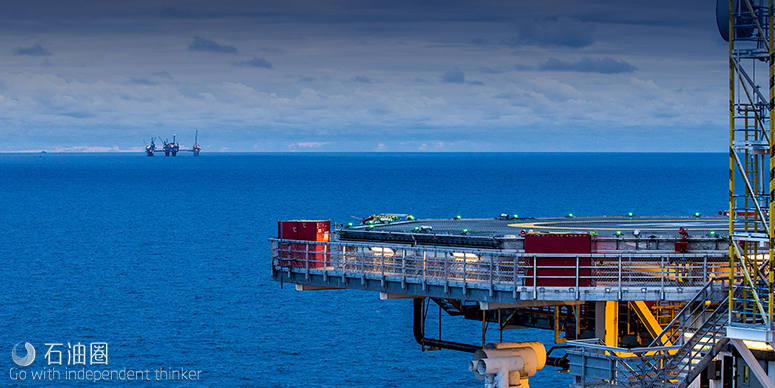A pioneering new method of pressure testing suspended mudline wells from a vessel, prior to P&A activity, developed by Unity, is set to deliver improved safety and cost savings following a successful project for Spirit Energy.
The Aberdeen-headquartered company’s Temporary Abandonment Cap Test Tool (TACTT) was deployed to support an end of life project located in the Southern North Sea.
It is the first technology of its kind, which is able to seal on to any type and size of temporary abandonment (TA) cap, pressure test the seal to ensure well containment, then test and vent pressure from below the TA cap and leave a reliable secondary seal in place. It can be cable deployed from a vessel through open water, rather than using a rig, providing significant cost savings.
During the project for Spirit Energy, the TACTT was deployed from a vessel, latched and sealed on to the TA cap and the seal was pressure tested. A second pressure test was then performed to provide verification of zero pressure under the TA cap’s back pressure valve. Once integrity was confirmed, this allowed the operator to safely continue with removal of the cap and complete their P&A operations.
The technology allows the operator to understand the amount of pressure accumulation below the TA cap and to accommodate this in their plans for decommissioning, either continuing with vessel-based intervention or leaving the TACTT safety valve in place and returning with a rig at a later date if necessary. Vessel rather than rig-based P&A work is faster and more cost effective and Unity’s technology can help to enable this type of intervention by safely confirming no back pressure for well re-entry.
A recent report by the Oil and Gas Authority estimated that 45% of all decommissioning expenditure in the UK Continental Shelf is through P&A of wells and the industry is currently striving to reduce this spend by at least 35%. It is generally acknowledged that vessel-based intervention can save between 30%-50% in costs compared to rig-based intervention.
Gary Smart, Unity CEO said: “Decommissioning is the inevitable end-stage of any well, and although the industry is developing many solutions to extend producing life, we must also look to innovate further new technology to support operators’ P&A obligations.
“As Europe’s largest well integrity specialist, we are well-placed to apply our engineering skills to meet this challenge. We developed the TACTT in response to operator demand, as there was no specific solution available on the market to pressure test suspended mudline wells behind their TA caps prior to removal.
“Our technology can open doors to huge operational savings, particularly by using it on multiple wells in region-wide vessel campaigns to pressure test, survey and prepare them for abandonment. This technology delivers a better understanding of each well’s individual conditions, allowing safer and more cost-effective P&A intervention.”
Olav Log, director of drilling and wells at Spirit Energy said: “Unity’s TACTT allowed Spirit Energy to successfully abandon two North Sea wells in line with UK Government regulations. The tool removed all risk associated with re-entering a suspended well and the ability to deploy by vessel provided significant project savings.
“The TACTT technology was originally designed to our specifications and successfully deployed from a rig in the North Sea in 2014. This latest development allowing for vessel deployment opens up further opportunities.”
Case Study: Removing 30 Year Old Subsea TA Caps to Facilitate Well Abandonment
A subsea well in the Dutch sector of the southern North Sea had been suspended for over thirty years. The operator wished to abandon the well so a suite of tools were required that would seal on and pull a set of temporary abandonment (TA) caps.
The 13-3/8” TA cap needed a tool which would seal onto the cap in order to stab a back pressure valve (BPV) to vent any pressure up through the drill string. A secondary means of holding pressure in the event that the existing BPV would not re-seal was also required, with the option to leave the system in place if needed and re-latch on at a later date.
Solution: Unity designed a Pulling Tool which could:
- Locate and latch a torque pin on the TA cap.
- Provide a double sealing system on the TA cap for pressure containment.
- Provide a means of testing the seal once energised, from both the annulus side and drill string side, prior to stabbing the BPV on the TA cap.
- Incorporate a secondary internal seal that would retain pressure from below in the event that the BPV did not re-seal.
- Provide a method of telling if the original BPV was opening/sealing.
- Allow a straight pull to disconnect, leaving the tool holding integrity on the TA cap for a return trip at a later date with a retrieval tool.
- Enable simple operation, including rotate left or right and pull up or set down weight.
The efficiency of the design and development of the first tool and its successful performance led to the development of further specialised tools for the recovery of other temporary abandonment caps. Quick and reliable well re-entry was achieved, which is vital for saving operational time, costing upwards of £150,000 per day on the jack-up rig, crews and equipment. The tool enabled the safe and environmentally secure re-entry to a well not accessed for over thirty years so it could be abandoned, ensuring the operator met their statutory obligations

 石油圈
石油圈
